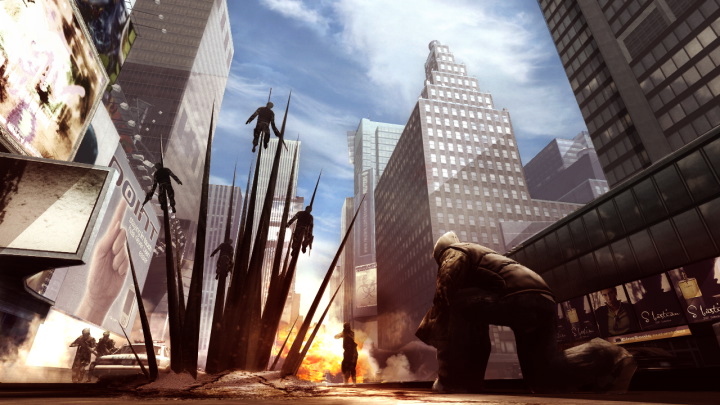 [Image: From Prototype, courtesy of Activision].
[Image: From Prototype, courtesy of Activision].
[Note: This is a guest post by Jim Rossignol].
The parallels and disparities between videogames and movies are endlessly debated, but there’s one certainty: they both return, routinely, to the architecture of New York City. The most frequently filmed city in the world is also the most frequently modeled.
The canyons of New York are as useful for game designers as they are for film directors. If the decision is arbitrary, then New York represents a kind of go-to alpha city: the logical choice if you need a city at all. For film directors it’s a grand and familiar backdrop, and the same bold geometry is relatively straightforward for game technologies to render. The grid-like topology, an added bonus, is easy for gamers to understand and navigate, too.
Models of the city exist, at many different levels of fidelity, for many different gaming scenarios. From the crude polygonal outlines of early iterations of Microsoft Flight Sim, to the normal-mapped biomorphic horrors of last year’s ultraviolent brawler, Prototype, Manhattan’s skyline and the districts beyond are etched into virtuality, over and over. These models exist on countless DVDs and hard-discs across the world, in ten of thousands of memory-states within the architecture of game consoles and PCs that are modeling the city right now, in real time. It might be impossible to say how many different (or identical) instances of New York are stored, digitally, within the city itself. It seems likely that a model of New York sits just an arm-length away from every Xbox-inhabited TV stand in the greater metropolitan area.
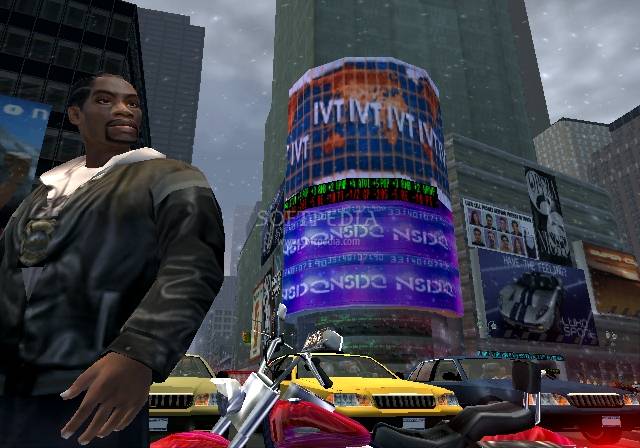 [Image: From True Crime: New York City, courtesy of Activision].
[Image: From True Crime: New York City, courtesy of Activision].
There have been dozens of instances of New York remade for the escape-hatch sub-realities of gaming in studios around the world. In just the past decade we could name Alone In The Dark, True Crime, The Hulk, World In Conflict, Forza 2, Project Gotham, 50 Cent, Max Payne 1 & 2, Gran Turismo 3, and Def Jam Vendetta. This number spills into scores more across the previous decades, and it’s a figure which becomes hazier still when mods, expansions, analogues, and cancelled or lost projects are counted in the mix.
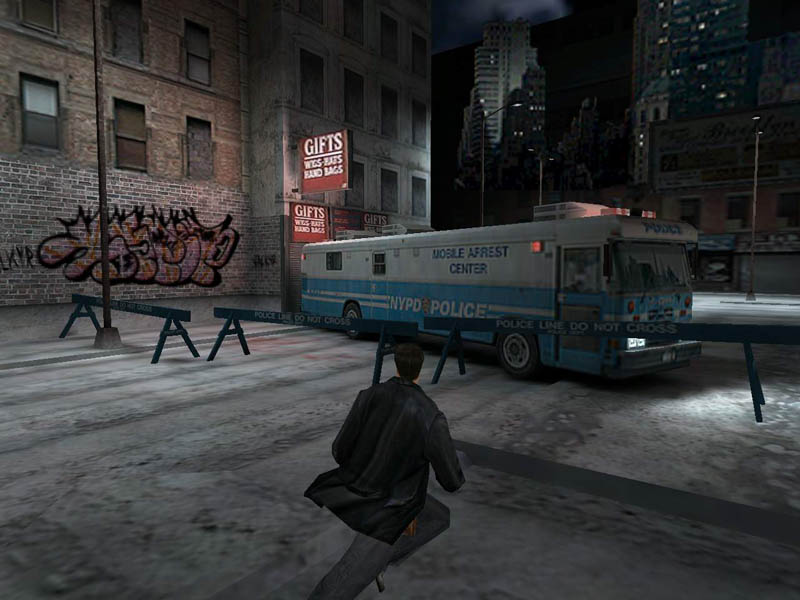 [Image: From Max Payne, courtesy of Rockstar Games].
[Image: From Max Payne, courtesy of Rockstar Games].
This reliance on New York isn’t simply about providing a visually interesting backdrop, of course, because it has also provided some of the strongest connections to character. When the noir ultraviolence of Max Payne was moved to Sao Paulo for Max Payne 3, there was uproar. If you took Max out of the tenements of New York, was he really Max at all? What was the New York cop without his delirious nightmare of New York’s criminal innards? Similarly, when it was announced that Crysis 2 would be moving from its technologically impressive jungle-island home to the exploding streets of Manhattan, no one really thought to comment. Of course it would be set in New York. Indeed, if they really wanted to see/destroy it all, where else would the aliens want to go next?
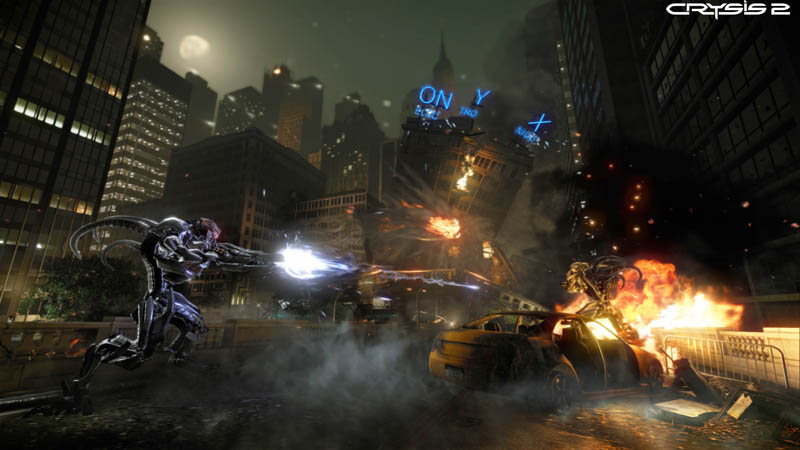 [Image: From Crysis 2, courtesy of Electronic Arts].
[Image: From Crysis 2, courtesy of Electronic Arts].
Crysis 2‘s ash-hazed avenues are impeccably damaged, while surly pedestrians in any sandbox city are happy to pick a fight if you don’t look where you’re going. These models new look increasingly like New York City, and more often behave like it, too. As the complexity of games increases, it seems that we are speeding towards a completionist model of the city—one that whirs and hums and yells like the real thing. As the models made by game studios march toward reality, they march towards Manhattan.
Yet realism is not a goal that games should really be striving for. Leave that to the CAD programs and the satellite maps. Instead games should explore the aspects of Manhattan that make less sense, like its dreams, or the models of the city that represent it not as it is, but as we are able to explore it, thanks to the mutational potentials of digital simulation. Examine those aspects of the city and perhaps the issue becomes less about New York as a fabulous piece of set design, and more about New York as a vital raw material for the business of fantasy.
This is a relationship that has moved on from simply being a straightforward practical connection to something that is embroiled in deeper meaning. New York city has become gaming’s ideal and idealized urban environment, and it has done so by becoming refictionalized and reimagined. The finest example of a city yet given to gaming, that of Grand Theft Auto IV, isn’t really New York at all, and yet it is more like New York than ever before. It’s the essence of New York—a distillation that is only possible thanks to the unique way in which games are able to make the figurative and the abstract resonate with us even more profoundly than the infinite detail of the everyday.
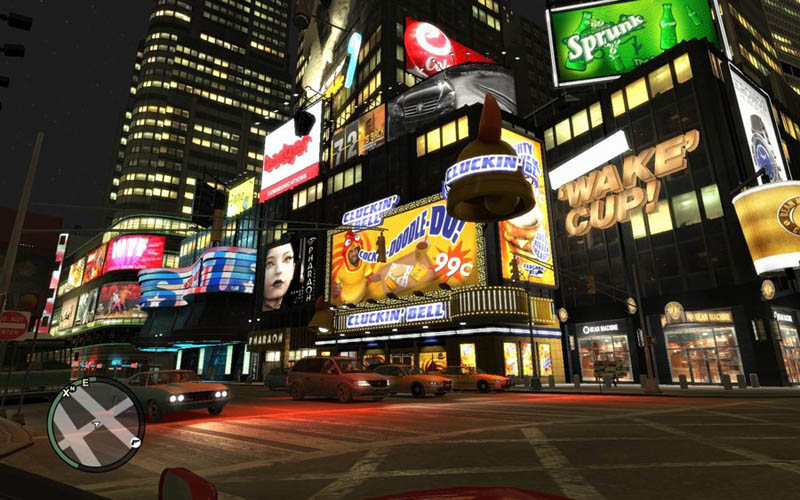 [Image: From Grand Theft Auto IV, courtesy of Rockstar Games].
[Image: From Grand Theft Auto IV, courtesy of Rockstar Games].
It’s worth noting that the superficial New Yorkness of other, real cities often counts in their favor when it comes to making movies. At the end of American Psycho, for instance, Toronto’s TD Centre convincingly stands in for the fictional Patrick Bateman’s office in the real-world Seagram Building—both buildings by Mies van der Rohe, but the latter is in Manhattan. The TD Centre thus becomes an architectural stunt double—or perhaps a sinewy body double helping the real New York look good. Not only that, but Pinewood Toronto Studios recently announced that they will be investing further in their home city to create lived-in, urban areas that look like residences in New York, Chicago and London—real districts of a city that are permanently and deliberately cast as a “living movie set.”
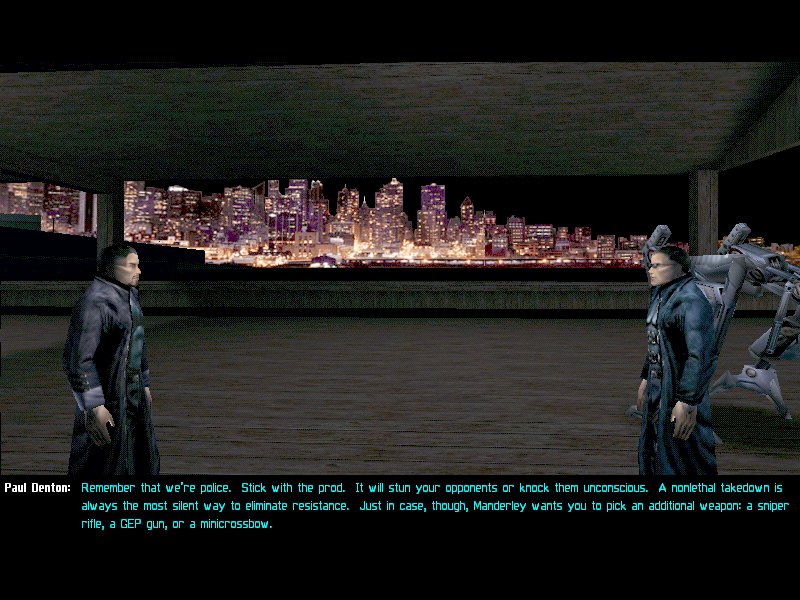 [Image: From Deus Ex, courtesy of Eidos Interactive].
[Image: From Deus Ex, courtesy of Eidos Interactive].
Where games are concerned, New York, and the modeling thereof, is a primary conduit for things that cannot happen, or things that need to happen over and over in a slightly different way each time. Not just a conveniently located backdrop, but a thing that can be toyed with digitally, again and again, first by the game developers and then by the gamers themselves. Occasionally, even, the simulations might accidentally model things that have yet to happen. Conspiratorial cyber-fantasy Deus Ex was awash with its own ideas about the sinister possibilities of our politico-military techno-future, but what was the meaning behind the twin towers missing from its future skyline? A year before the towers were destroyed? The silent bells of paranoia began to ring.
In truth the skyline had been cheaply mirrored to reduce the game’s memory footprint, and the Twin Towers portion had simply been left out to make the game run more smoothly. It was nothing more than a technical conceit of the kind games are riddled with, one of the limiting factors of memory or processing that makes the computerized cities so much less than their real counterparts. But it was also a manifestation of something that became inevitable as New York was modeled over and over—as speculation mingled with outright fantasy—the inevitability that games could become a form of architectural prophecy.
• • •Jim Rossignol is a games critic,
blogger, occasional guest writer on BLDGBLOG, and author of the excellent
This Gaming Life: Travels in Three Cities, published by the University of Michigan Press. He is
@jimrossignol on Twitter.
 [Image: Wallpaper by Studio Carnovsky, via Creative Review].
[Image: Wallpaper by Studio Carnovsky, via Creative Review]. 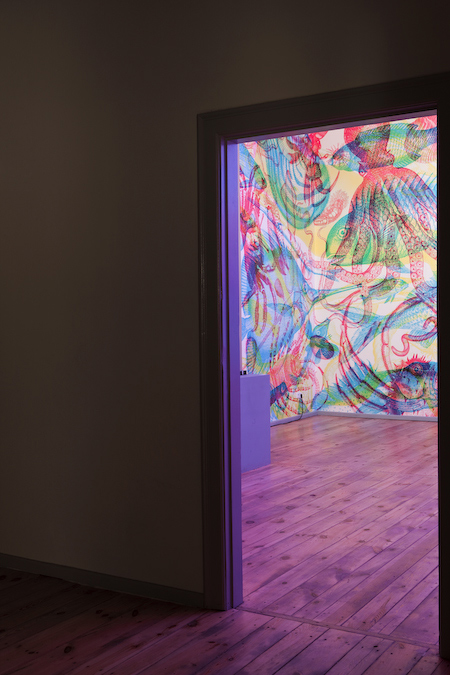 [Image: Wallpaper by Studio Carnovsky, via Creative Review].
[Image: Wallpaper by Studio Carnovsky, via Creative Review].

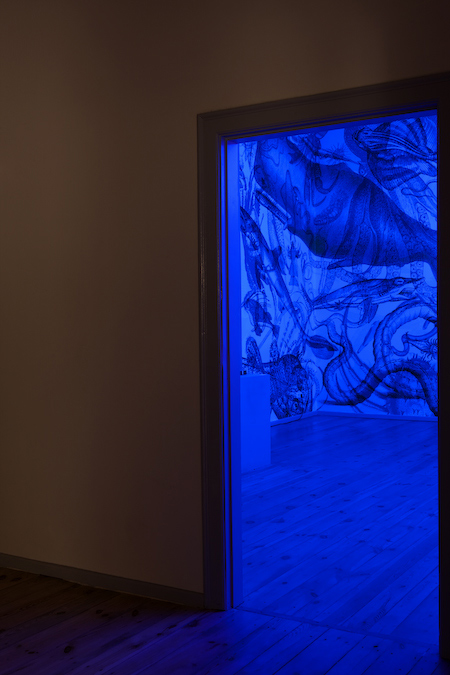 [Images: Wallpaper by Studio Carnovsky, via Creative Review].
[Images: Wallpaper by Studio Carnovsky, via Creative Review].

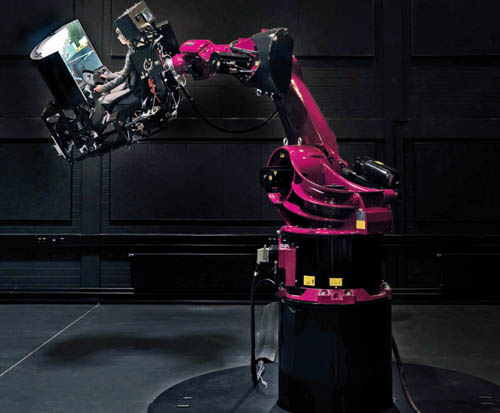 [Image: Photo by
[Image: Photo by 
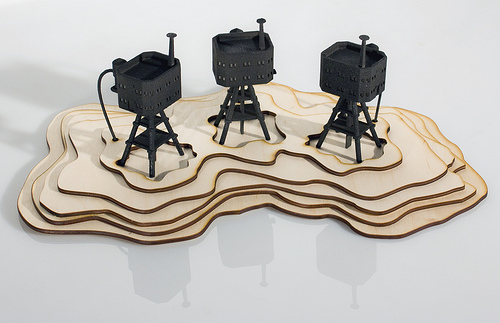 [Image: From
[Image: From 
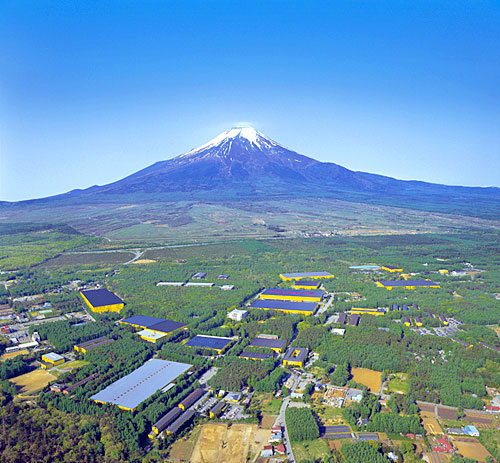 [Image: The yellow chipboards of the
[Image: The yellow chipboards of the 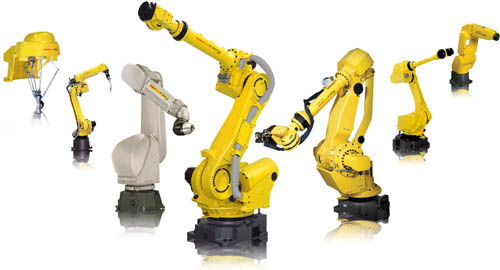 [Image: Assembly robots by
[Image: Assembly robots by 
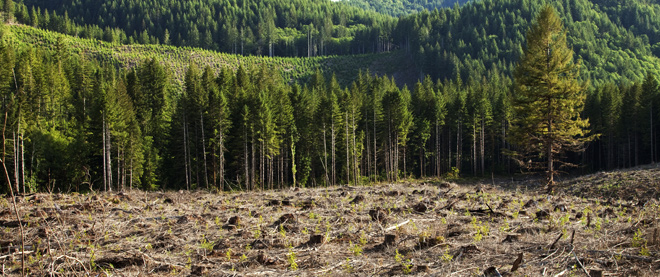 [Image: Courtesy of Getty Images/
[Image: Courtesy of Getty Images/ [Image: Thrilling Wonder Stories II at the Architectural Association;
[Image: Thrilling Wonder Stories II at the Architectural Association;  [Image: From
[Image: From  [Image: From
[Image: From  [Image: From
[Image: From  [Image: From
[Image: From  [Image: From
[Image: From  [Image: From
[Image: From 
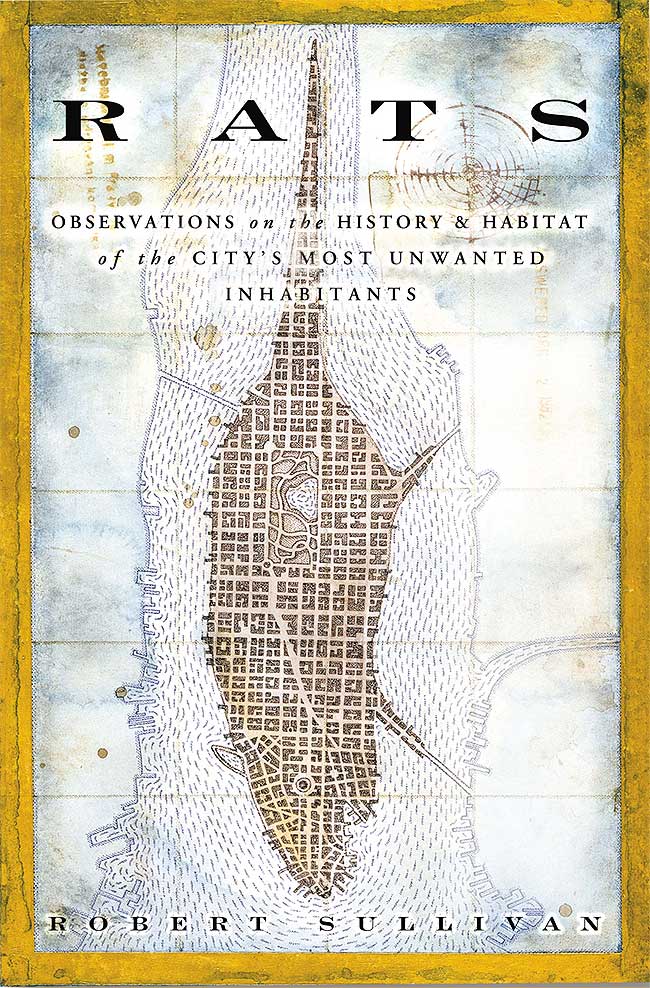 [Image:
[Image: 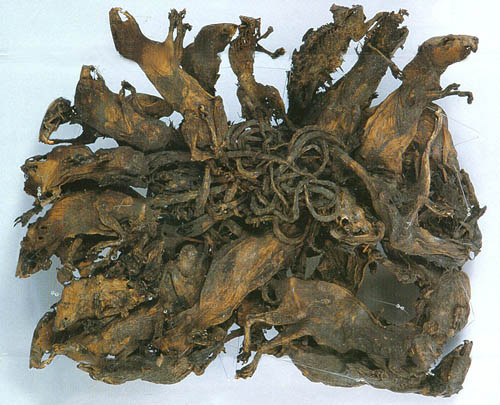 [Image: A “
[Image: A “ [Image: Thrilling Wonder Stories II at the Architectural Association;
[Image: Thrilling Wonder Stories II at the Architectural Association; 
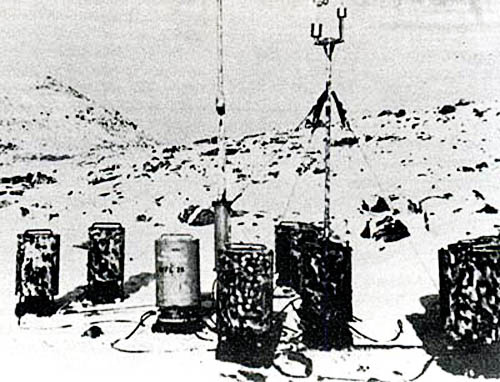 [Image: Kurt, the Nazi weather station, via
[Image: Kurt, the Nazi weather station, via  [Image: Courtesy of the
[Image: Courtesy of the 

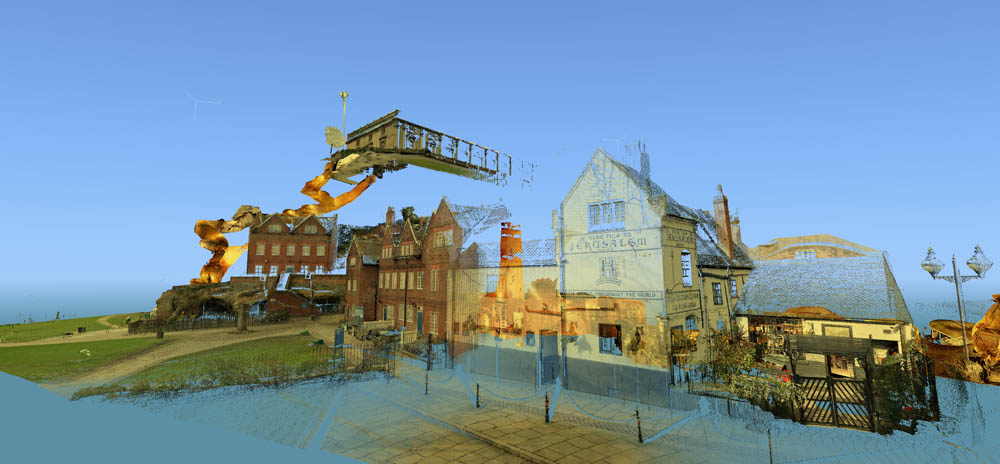

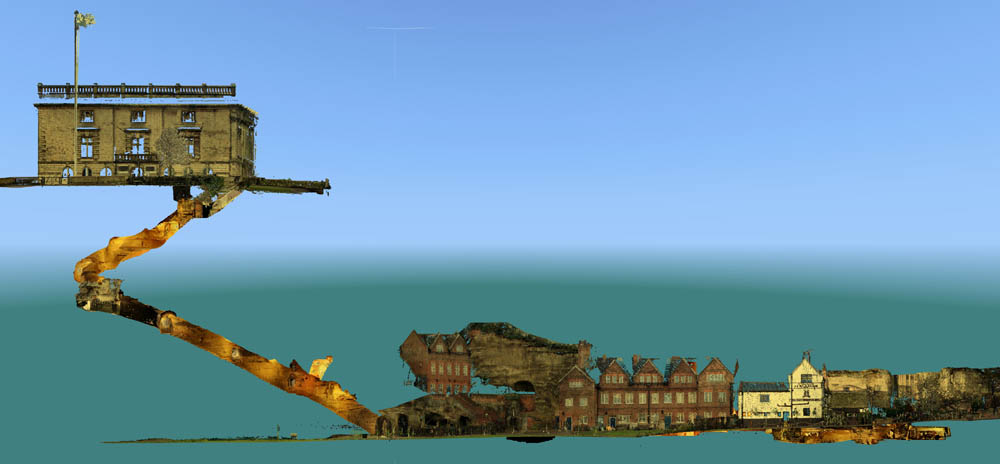 [Images: Courtesy of the
[Images: Courtesy of the 
 [Images: Courtesy of the
[Images: Courtesy of the  [Image: The scanner at work; courtesy of the
[Image: The scanner at work; courtesy of the